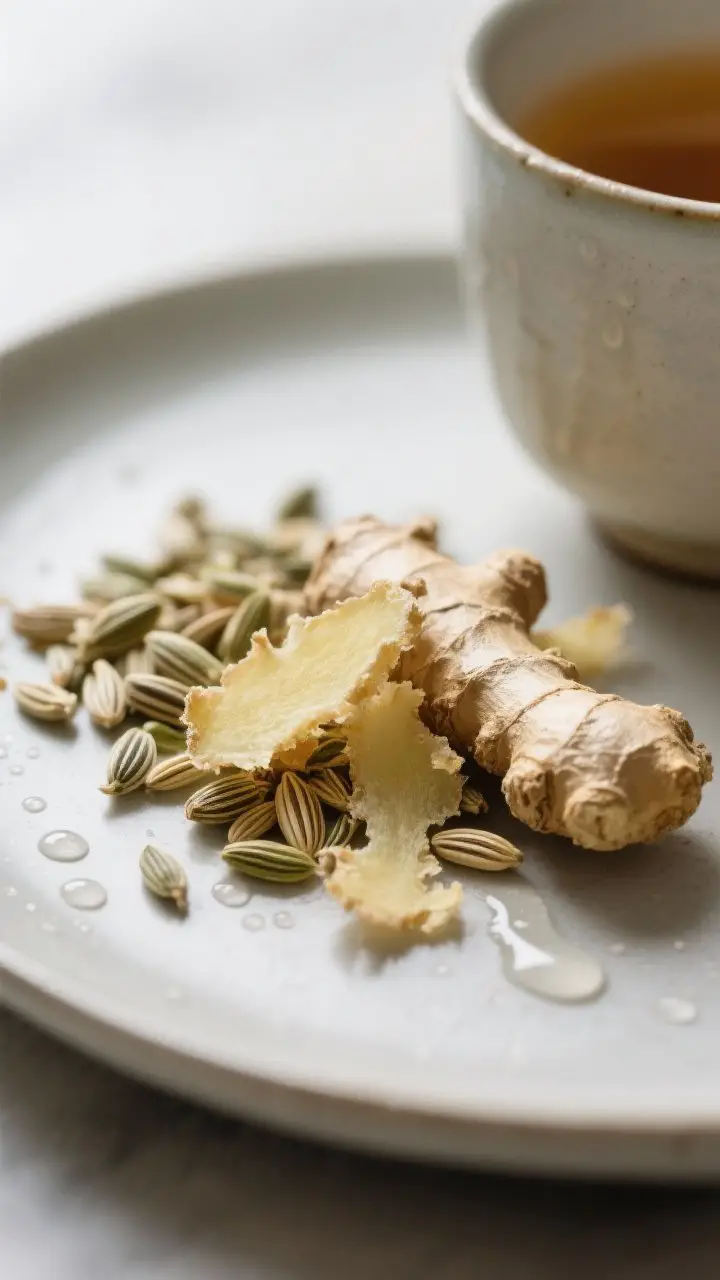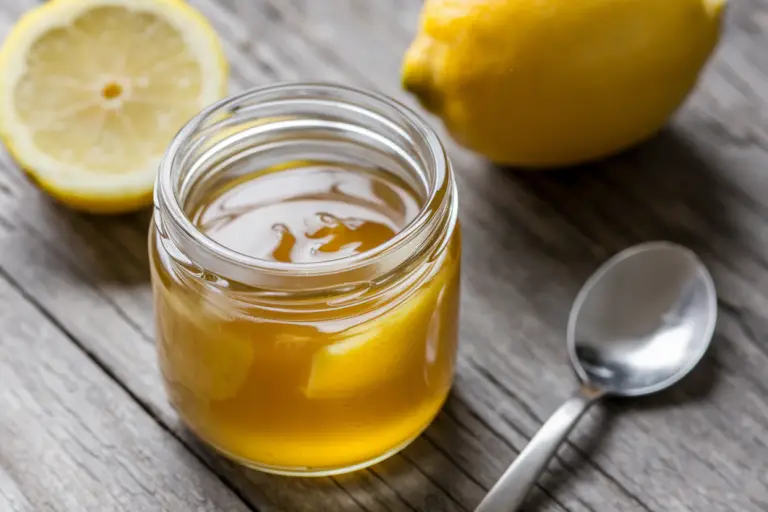Diy Tummy Tamer For Indigestion
You know that moment when your stomach stages a rebellion right after you eat something delicious-but-questionable? Yeah, indigestion loves drama. The good news: you can calm the chaos without sprinting to the pharmacy.
Let’s build a DIY tummy tamer that actually works, tastes decent, and doesn’t require a chemistry degree.
What’s Actually Going On In There?

Indigestion usually means your stomach says “too much, too fast, too greasy,” and starts producing extra acid. You feel bloated, gassy, burny, or just…ugh. You don’t need to memorize biochemistry to fix it.
📖 Get Access to 50+ Printable Smoothie Recipes Instantly! 🖨️
Boost your health with delicious smoothies! These easy-to-follow printable recipe eBooks are perfect for detoxing, fitness goals, and tasty plant-based living. Available for instant download on Etsy! 🌿✨
Think of indigestion like a traffic jam. Food lingers, gas builds, and stomach acid honks at your esophagus. We’ll reduce the honking and keep things moving with simple, kitchen-shelf helpers.
The DIY Tummy Tamer Formula
You want a combo that soothes acid, reduces gas, and helps digestion.
Here’s a simple home mix you can make in under five minutes. Base Recipe (single serving):
- 1 cup warm water
- 1 tablespoon fresh lemon juice or 1 teaspoon apple cider vinegar
- 1 teaspoon raw honey or maple syrup (optional)
- 1/4 teaspoon ground ginger or 1 teaspoon freshly grated ginger
- 4–6 fresh mint leaves or 1 mint tea bag (optional)
- Small pinch of salt
How to make it:
- Warm the water until it’s cozy, not scalding. You want “ahh,” not “ouch.”
- Stir in lemon or ACV, honey, ginger, and salt. Add mint and steep 3–5 minutes if using.
- Sip slowly over 10–15 minutes.
Don’t slam it. Your stomach hates chugging contests.
Why it works:
- Warm water relaxes the digestive tract and moves things along.
- Lemon or ACV can nudge digestion and help your stomach normalize acid balance. Weirdly helpful.
- Ginger reduces nausea, bloating, and gas.
It’s the MVP here.
- Mint calms spasms and helps gas exit stage left. FYI: avoid mint if you get reflux, it can relax the LES too much.
- Salt improves hydration and supports stomach acid function in tiny amounts.
- Honey smooths the flavor and can soothe the throat if acid burned it on the way up.

Fast Add-Ons For Extra Relief
Sometimes you need backup. Here are quick boosters you can add or use separately.
Baking Soda Rinse (Occasional Use)
1/4 teaspoon baking soda in 1/2 cup water, sip slowly.
It neutralizes acid fast. Use sparingly—too much can cause rebound acid and gas. Not for people on sodium-restricted diets unless your doctor says it’s fine.
Chamomile-Ginger Tag Team
Steep a chamomile tea bag with fresh ginger slices.
Gentle, calming, and perfect for nighttime indigestion. Add a touch of honey if you want.
Fennel Seed Chew
Chew 1/2 teaspoon fennel seeds or steep them in hot water. They help with gas and cramping.
Your breath smells like licorice, which IMO is a bonus.
Simple Habits That Make Your Tummy Love You
You can’t out-supplement a shovel-full-of-nachos-at-11pm habit. Tweak a few things and your stomach will chill.
- Eat slower. Chew well. Give your enzymes a head start.
- Downsize portions. Smaller meals digest easier than gut-busting feasts.
- Skip late-night meals. Finish dinner 2–3 hours before bed.
Your stomach wants sleep too.
- Watch trigger foods. Common culprits: fried foods, extra spicy dishes, alcohol, coffee, chocolate, tomato-heavy meals, carbonated drinks.
- Go for a gentle walk. Ten minutes post-meal keeps things moving. No burpees. Please.
- Elevate your head in bed if heartburn joins the party.
Gravity helps.

Build Your Personal Tummy Toolkit
Keep a small stash so relief doesn’t depend on luck and a gas station run.
- Ginger: fresh knobs, tea, or crystallized pieces (watch sugar).
- Chamomile: tea bags for bedtime indigestion.
- Fennel seeds: a jar for post-meal chewing or tea.
- Peppermint tea: amazing for gas, but skip if reflux-prone.
- Apple cider vinegar: choose raw, unfiltered if you like the vibe; filtered works, too.
- Baking soda: emergency neutralizer, not a daily habit.
- Electrolyte packets: useful if indigestion joins nausea/diarrhea.
My Go-To Routine (Real Talk)
If I feel indigestion brewing, I:
- Make the warm lemon-ginger mix, sip it slow.
- Walk for 8–10 minutes. Outside if possible because fresh air works like a mood upgrade.
- If gas persists, chew fennel seeds. If burning persists, a small baking soda rinse—only if I really need it.
- Light dinner next time.
Lesson learned…for at least a week.
When To Tweak The Recipe
Not every stomach loves the same things. Customize based on your situation.
- Prone to reflux? Skip mint and go with chamomile instead. Use lemon/ACV cautiously; some people improve, some don’t.
Test tiny amounts.
- Sensitive to acid taste? Use more ginger and fennel, less lemon/ACV. You can switch to a pinch of cinnamon for warmth.
- Low-sugar approach? Drop the honey and use plain warm water + ginger + fennel.
- Nausea heavy? Ginger + chamomile + a few crackers. Keep it bland and small.
Science-ish, But Make It Simple
Here’s the quick-and-dirty reasoning:
- Ginger speeds gastric emptying a bit and eases nausea.
That means less lingering food = less pressure = less reflux.
- Fennel acts as a carminative—basically it helps gas break up and move along.
- Chamomile relaxes smooth muscle and lowers irritation. Cozy vibes with actual benefits.
- Acid helpers (lemon/ACV) can stimulate digestive secretions and support stomach’s natural acidity for better breakdown—counterintuitive but legit for some.
- Baking soda neutralizes acid on contact. Relief fast, but use lightly to avoid the rebound effect.
FAQ
Can I use just ginger and water?
Absolutely.
Ginger alone helps a lot. Slice a few coins, steep in hot water 5–8 minutes, sip slowly. It’s the simplest effective option.
Does apple cider vinegar really help or is it hype?
Both, IMO.
It helps some people by supporting normal stomach acidity and digestion. Others feel worse. Start with 1/2 teaspoon in warm water and see how your body reacts.
What if I get heartburn at night?
Stop eating 3 hours before bed, elevate your head by 6–8 inches, and skip mint.
Try chamomile-ginger tea instead. A small snack of something bland (like a couple of almonds or a rice cake) can help some folks.
Is baking soda safe?
In small amounts and occasionally, yes. Stick to 1/4 teaspoon in water, not more than once or twice a day.
Avoid if you’re on a low-sodium diet, have kidney problems, or use it daily like a beverage—don’t.
When should I see a doctor?
If you have frequent indigestion (more than a couple times a week), unintentional weight loss, trouble swallowing, black or bloody stools, persistent vomiting, severe pain, or you’re over 55 with new symptoms—get checked. That’s not “just indigestion.”
Can I take these with antacids or reflux meds?
Usually yes, but keep it simple. Avoid piling on baking soda with other antacids.
If you take PPIs or H2 blockers, the teas (ginger, chamomile, fennel) are generally fine. When in doubt, ask your clinician—FYI, interactions can happen.
The Bottom Line
You don’t need fancy potions to calm a cranky stomach. Warm water, ginger, and a little acid-smart tweak can work wonders, plus a short walk and smarter portions.
Build your own go-to mix, test what your body likes, and keep the baking soda for emergencies. Your gut gets happy, you get your evening back, and that second plate of chili finally meets its match.







